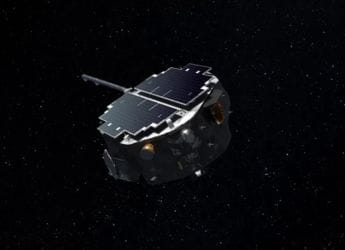- Home
- Science
- Science News
- Scientists Propose Space Missions to Chase Down Interstellar Comets
Scientists Propose Space Missions to Chase Down Interstellar Comets
A study shows spacecraft could intercept interstellar comets with today’s technology, unlocking new insights into material from beyond our solar system.

Photo Credit: NASA/Princeton/Patrick McPike
SWRI’s Mark Tapley says it requires only past NASA technologies
Scientists now say that missions to chase and study interstellar comets – objects like the recent visitor 3I/ATLAS – are both feasible and affordable. A Southwest Research Institute study reports that a spacecraft could intercept such a comet with current technology, given enough notice and funding. In fact, the team's calculations showed that a probe could have already reached 3I/ATLAS. Such a flyby would allow us to directly sample material from beyond our solar system, unlocking new clues about the makeup of other star systems.
Scientific potential and cost efficiency
According to SWRI scientists, a close flyby of an interstellar comet would yield “unprecedented insights” into these objects' makeup and origins. For example, a probe could sample the comet's nucleus and coma (its cloud of gas and dust) to learn how it formed and evolved. The team found that such missions could be done with current rockets and instruments. In fact, many would require less fuel and velocity change than routine solar-system missions. As SWRI specialist Mark Tapley notes, this doesn't take “anything harder than the technologies and launch performance” of past NASA missions.
International collaboration
In reality, the search for interstellar comets is a worldwide endeavor. In order to track 3I/ATLAS, ESA astronomers currently use observatories in Hawaii, Chile, and Australia, some of which are supplied by international collaborations. Hubble and other large space telescopes are collaborative projects between NASA and ESA. As an example of how agencies around the world intend to actively respond to these transient objects, Europe's upcoming Comet Interceptor mission (due in 2029) will wait in space for a pristine comet or perhaps an interstellar visitor. When the next visitor is quickly identified, this kind of cooperation spreads expertise and costs, increasing the viability of a probe mission.
For the latest tech news and reviews, follow Gadgets 360 on X, Facebook, WhatsApp, Threads and Google News. For the latest videos on gadgets and tech, subscribe to our YouTube channel. If you want to know everything about top influencers, follow our in-house Who'sThat360 on Instagram and YouTube.
Related Stories
- Samsung Galaxy Unpacked 2025
- ChatGPT
- Redmi Note 14 Pro+
- iPhone 16
- Apple Vision Pro
- Oneplus 12
- OnePlus Nord CE 3 Lite 5G
- iPhone 13
- Xiaomi 14 Pro
- Oppo Find N3
- Tecno Spark Go (2023)
- Realme V30
- Best Phones Under 25000
- Samsung Galaxy S24 Series
- Cryptocurrency
- iQoo 12
- Samsung Galaxy S24 Ultra
- Giottus
- Samsung Galaxy Z Flip 5
- Apple 'Scary Fast'
- Housefull 5
- GoPro Hero 12 Black Review
- Invincible Season 2
- JioGlass
- HD Ready TV
- Laptop Under 50000
- Smartwatch Under 10000
- Latest Mobile Phones
- Compare Phones
- Realme P3 Lite 5G
- Sony Xperia 10 VII
- Itel Super 26 Ultra
- HMD 102 4G
- HMD 101 4G
- HMD Vibe 5G
- Samsung Galaxy F17 5G
- Oppo A6 Pro
- Acer Nitro V15 (2025)
- Moto Book 60 Pro
- Moto Pad 60 Neo
- Xiaomi Moaan InkPalm Mini Plus 2
- NoiseFit Endeavour Pro
- Apple Watch SE 3
- Elista QLED Google TV
- TCL C72K QD Mini‑LED TV
- Asus ROG Ally
- Nintendo Switch Lite
- Haier 1.6 Ton 5 Star Inverter Split AC (HSU19G-MZAID5BN-INV)
- Haier 1.6 Ton 5 Star Inverter Split AC (HSU19G-MZAIM5BN-INV)

















